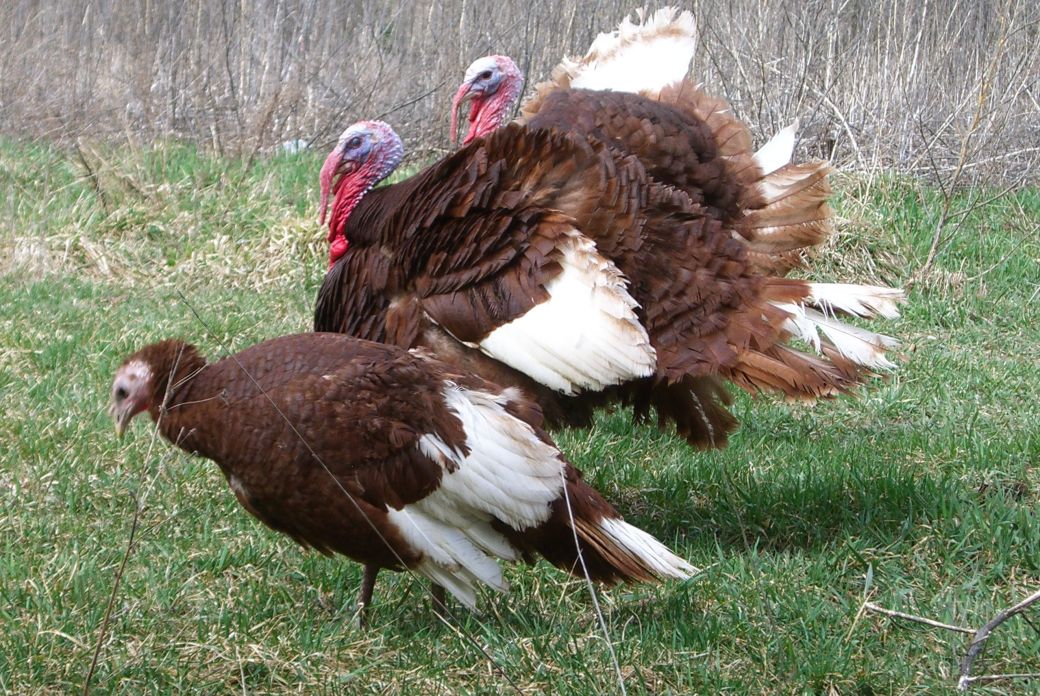The Buff or Jersey Buff is a breed of home turkey named for its buff-colored plumage. The Jersey Buff turkey is a breed of home turkey from the mid-Atlantic area. In this article, I am going to talk about Jersey Buff Turkey poults, breed, care, profile, facts, etc.
Jersey Buff Turkey profile
It’s named and famous for its stunning buff-colored plumage and it’s also recognized simply as Buff turkey.
After the event, the breed by no means widespread and it was accepted by the American Poultry Association in 1874.
Within the late 1800s, the breed was used within the improvement of the Bourbon Red variety, which was chosen extra purposefully for efficiency and was promoted extra broadly.
History
Accepted into the Standard of Perfection by the American Poultry Association in 1874, the unique strain of Buff turkey was used within the improvement of the Bourbon Red breed, however had died out totally by the early 20th century.
This was partly because of the problem in selectively breeding the correct color sample, and in addition to the rise of recent business breeds available on the market.
Within the 1940s, curiosity in a buff turkey was revived, and a brand new pressure of the breed — referred to as the New Jersey Buff after the place it was developed — was created.
Nonetheless, the Broad Breasted White continued to edge out all different heritage turkey breeds just like the Buff, and as we speak is critically endangered, in accordance with the American Livestock Breeds Conservancy.
It has additionally been included in Sluggish Meals USA’s Ark of Style. The breed is hottest within the U.S., however, can be discovered within the U.K. and Australia.
The Jersey Buff has wealthy reddish-buff-colored body feathers. Tail feathers are white with a lightweight buff color which might lengthen midway down the tail.
Main and secondary wing feathers are white with buff shading.
For each tom and hens, the shanks and toes are bluish-white or flesh-colored, the beard is black and the eyes are hazel. Poults are a stable tan color with a white face at hatch.
They have a clear carcass when dressed. The Jersey Buff has not been just lately chosen for manufacturing attributes, together with weight acquire and plenty of birds might be smaller than said.
The hens have been recognized to be good egg producers. The cautious choice for good health, capacity to mate naturally and manufacturing attributes will assist make sure the survival of Jersey Buff turkeys.
Traits
The Buff has a really mild or reddish-brown plumage, which is its defining attribute.
A trait that drew curiosity from breeders is the truth that the lighter feathers of the breed current a better, cleaner carcass.
Nevertheless, it has not been aggressively chosen for manufacturing traits and is thus considerably smaller than many fashionable breeds.
Younger toms weigh around 21 kilos and mature hens weigh roughly 12 kilos.
The Jersey Buff turkeys are medium to massive-sized animals with a really stunning mild or reddish-brown plumage. The colored plumage is probably the most defining trait of those birds.
Their tail feathers are white with a lightweight buff bar throughout them close to the top. Main and secondary wing feathers are white with buff shading.
Their shanks and toes are bluish-white or flesh-colored. Their eyes are hazel, and the beard is black.
The Jersey Buff toms and hens are completely different in color, and the hens are likely to lighten with age (particularly after a molt).
The average live body weight of the absolutely grown Jersey Buff toms is around 10.5 kg and the hen’s weight roughly half of that.
In common the hen’s weight around 6 kg. Photograph and information from The Livestock Conservancy and Wikipedia.
Uses
The Jersey Buff turkey is a meat breed. It’s raised primarily for meat production.
Take away
The Jersey Buff turkeys are sturdy and really productive birds. A trait that drew curiosity from breeders is the truth that ‘the lighter feathers of the breed present and simpler, cleaner carcass’.
Though the breed hasn’t been aggressively chosen for manufacturing traits and is thus considerably smaller than many different fashionable turkey breeds.
Other Recommended Articles
- Little Cormorant (Microcarbo niger) Bird Profile
- Double-Crested Cormorant (Phalacrocorax auritus) Profile
- Black-crowned Night Heron Facts | Habitat | Call | Size
- Black-headed Grosbeak Description and Facts
- Brown-crested Flycatcher Bird – Fact | Call | Nest | Song
- Common Yellowthroat Warbler Description
- Ash-throated Flycatcher Bird – Facts | Song | Call | Nest
- Small Bird with Yellow Throat – List | Profile
- Lineated Woodpecker – Description | Call | Size | Nest
- Cocoi Heron – Ardea cocoi – Description and Facts
- What are the Different Types of Kingfisher Birds?
- Banded Kingfisher Bird – Facts | Sound | Song | Weight
- River Kingfishers – Facts | Description | Profile
- Belted Kingfisher Nest – All About Its Home
- Malachite Kingfisher Bird – Facts | Juvenile | Call | Diet
- Giant Kingfisher Facts | Description | Call | Size | Sound
- Green Kingfisher Bird – Description | Fact | Call | Range
- Micronesian (or Guam) Kingfisher – Description | Facts
- Pied Kingfisher Bird – Facts and Description
- Belted Kingfisher Bird – Facts | Description | Call

